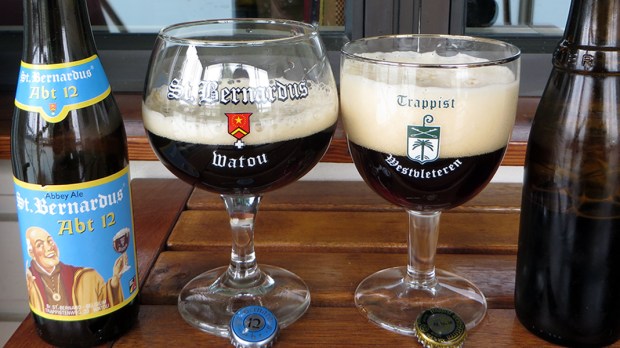Lent is set to kick off this week, launching a season of penance and spiritual reflection during which time Catholics the world over immerse themselves in a 40-day period of abstinence and fasting. In our time, some of the most popular luxuries to give up include social media, sweets, electronic devices, and caffeine. Some of the more die-hard types may decide to keep the Friday abstinence from meat throughout the entire season. The monks of the 17th century, however, had a much more hardcore approach: a liquid diet.
In the 1600s, the Paulaner Monks of Southern Italy relocated to the Cloister Neudeck ob der Au, in Bavaria. The strict order required the brothers to refrain from all solid foods for the entire 40 days of Lent, which naturally brought about questions of how the order would maintain proper nutrition throughout the season. Turning to what they knew, they concluded that beer, or “liquid bread” as they called it, could sustain them.
The Paulaners brewed a special, unusually strong beer that would provide high levels carbohydrates and nutrients to fight off malnutrition. This early doppelbock-style beer eventually became the original product of Paulaner brewery, founded in 1634, under the name “Salvator,” named after “Sankt Vater,” which CNA reports can be roughly translated as “Holy Father beer.”
Vine Pair explains that the monks, proud of their work, became worried that the brew was too delicious to count as a Lenten sacrifice. Hoping for a conclusive ruling, the Paulaner monks sought guidance from Rome and shipped a barrel of their best to the pope, who could determine if the beer was appropriate fasting fare.
In a bit of a twist, during the long trip from Bavaria to Rome, the beer spoiled. When the pope tasted it, he deemed it so foul that consuming it was considered a “sacrifice unto itself.” He gave the monks the go-ahead and they enjoyed their liquid Lent with clear consciences.
Today, Paulaner currently serves 70 countries and is one of the chief breweries featured at Munich’s Octoberfest. The “Salvator” is distributed and enjoyed all over the world, but many do not know of its penitential origins.
In 2011, J. Wilson, a Christian working as an editor for a county newspaper in Iowa, heard this story and became intent on recreating the monk’s fast. He partnered with a local brewery that created a beer similar to the “Salvator,” which he consumed exclusively for the entire 46 days of Lent and Holy Week.
In order to ensure his health, Wilson had weekly checkups with his doctor and even got permission from his employers to drink on the job (at lunch time), drinking four beers over the course of a work day and five beers on Saturdays and Sundays. While it may sound like Wilson would have been blitzed the whole time, he described the experience as transformative.
On his CNN blog, Wilson calls the human body an “amazing machine,” noting that even though we may fill the body with junk food and and neglect it in lethargy, it can still “climb mountains, run marathons and, yes, it can function without food for long periods of time,” he wrote.
Wilson described the first few days as being the hardest, accented by an acute hunger, but as time wore on he noticed a change:
“My body then switched gears, replaced hunger with focus, and I found myself operating in a tunnel of clarity unlike anything I’d ever experienced.” He ended up losing over 25 pounds over the course of the Lenten season, but learned to practice “self-discipline.”
As Wilson blogged about his fast, he received numerous requests for interviews from media outlets all over the country, but he resisted the urge to answer all of them, turning his new intense clarity towards his faith and the reason for the fast. Of the fast, he said the hardest part was abstaining from the media.
By the end of Lent, Wilson concluded that monks fasting on doppelbock was “not only possible, but probable.” He wrote:
“It left me with the realization that the monks must have been keenly aware of their own humanity and imperfections. In order to refocus on God, they engaged this annual practice not only to endure sacrifice, but to stress and rediscover their own shortcomings in an effort to continually refine themselves.”
Of course, Catholics are not required to give up all solid foods for Lent, but we are all called to do penance during this season in emulation of Christ’s 40-day fast in the wilderness. If healthy, adults aged 18-59 must fast on Ash Wednesday and Good Friday, and are encouraged to continue the Good Friday fast through Holy Saturday to the Easter Vigil. A proper fast is considered eating one full meal and two smaller meals that, taken together, do not equal that one full meal.
In their 1966 pastoral letter on fasting, the USCCB wrote:
“No Catholic Christian will lightly excuse himself from so hallowed an obligation on the Wednesday which solemnly opens the Lenten season and on that Friday called ‘Good’ because on that day Christ suffered in the flesh and died for our sins.”

